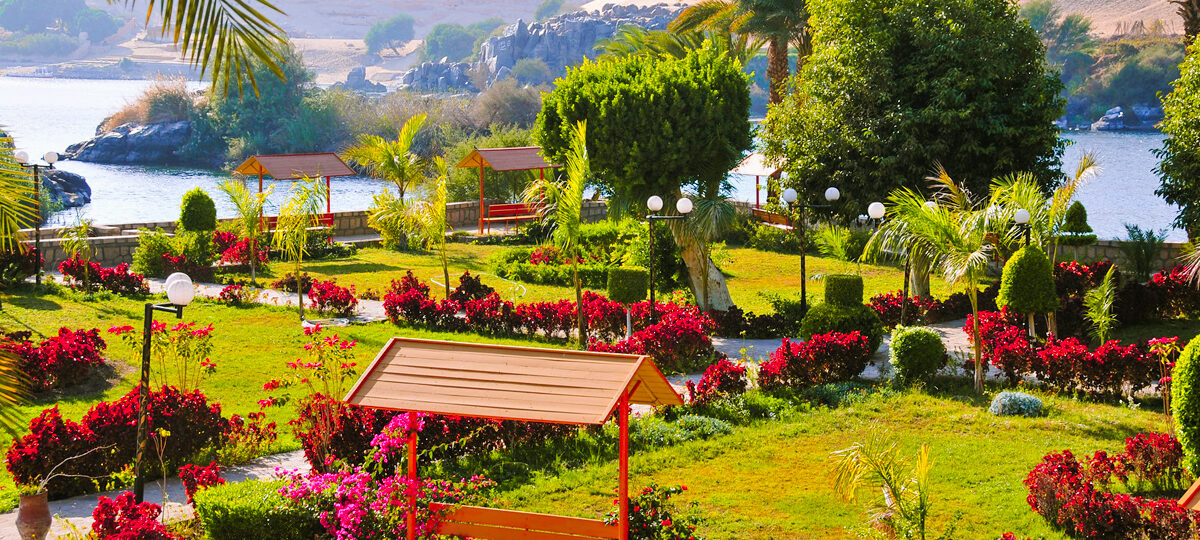Mausoleum of Aga Khan
Passing through the Egyptian city of Aswan on the way up the Nile, travelers will see the tomb where Aga Khan III, one of the most respected spiritual leaders in Islam, was laid to rest at his own request.

Passing through the Egyptian city of Aswan on the way up the Nile, travelers will see the tomb where Aga Khan III, one of the most respected spiritual leaders in Islam, was laid to rest at his own request.

The 19th dynasty Pharaoh Ramses II ruled Egypt for 67 years. During that time, he had the chance to build the grand tomb temple called the Ramesseum to show how great he was and to leave a lasting impression on his people It took more than 20 years to build the complex, and now a lot of it is in ruins. Pieces of a 60-foot-tall, 1,000-ton colossus of Ramses that was once on display at

The Aswan Botanical Garden has plants and birds from all over the world, from India to the Far East to Africa. The Aswan Botanical Garden is a beautiful and unusual place to get away from the city. When you walk through this garden full of real Egyptian artifacts, you’ll feel like you’re in a dream. Lord Horatio Kitchener had rare and exotic plants planted all over the island as a thank you for his work as consul general of the Egypt Army when Egypt was ruled by the British. He gave her the island as a gift.

Egypt is famous for its long and varied history, as well as its rich cultural heritage. All of these things are well-deserved. One of Egypt’s more recent and rarely talked about achievements is the Aswan High Dam, a mechanical miracle that provides a lot of the country’s drinking water and electricity.

Most of Egypt’s New Kingdom pharaohs were buried in the Valley of the Kings. During the New Kingdom, Egypt had an empire that stretched from the eastern Mediterranean coast to the Nile Delta (the 18th, 19th, and 20th dynasties). Among the kings who were buried there were Thutmose III, Tutankhamun, and Ramses.